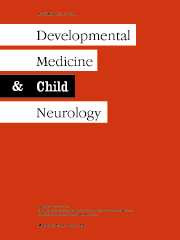Article contents
Hemispatial neglect in young children with early unilateral brain damage
Published online by Cambridge University Press: 06 February 2003
Abstract
Hemispatial neglect is commonly observed in adults following right-hemisphere brain lesions. Given the potential for reorganization in the developing brain, spatial neglect may not be apparent following early unilateral damage. This study aimed to determine whether infants who experienced pre- or perinatal focal brain lesions showed evidence of spatial neglect. Study participants were 33 infants/toddlers (22 males, 11 females; age range 6 to 48 months); 27 preschool children (14 males, 13 females; age range 28 to 75 months) with either left hemisphere (LH) or right hemisphere (RH) damage of pre- or perinatal onset (total 60), and 36 control individuals (15 females, 21 males; age range 28 to 75 months). Participants were assessed using two object-removal preference tasks. Control children showed no lateralized preference for object removal. Those with LH or RH damage preferentially removed objects from the side of the board ipsilateral to the lesion first and the contralateral side last. These results suggest that spatial neglect may be found in young children even after very early unilateral brain damage. Further, in contrast to the adult pattern, contralateral neglect is present for up to 6 years after either LH or RH damage. This pattern suggests that there may be a different distribution of attention to space in the developing brain as compared with the mature brain. The persistence of spatial neglect suggests that there are some limitations on plasticity in the developing human brain.
- Type
- Original Articles
- Information
- Copyright
- © 2003 Mac Keith Press
- 1
- Cited by




